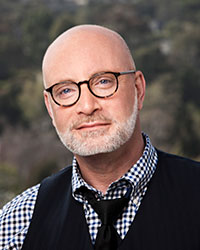 Dr. Robert Weiss LCSW, CSAT
Dr. Robert Weiss LCSW, CSAT
Every person has an arousal template in their brain—a map of what they find erotically appealing. The primary elements in a person’s arousal template are genetic, though some elements of arousal may be learned based on life experience (especially trauma) and cultural influences. Generally, a person’s basic arousal template (the things to which they are deeply attracted) is set by the time they are 4 to 6 years old, even though they are not yet sexually aware. As people get older, their awareness of elements in their arousal template can and often does expand, especially if pornography is part of their sexual story.
Stated another way, pornography is, for many users, revelatory. Though it doesn’t add brand new elements to a person’s existing arousal template, it can and often does reveal previously hidden or latent elements of that template. For an example of porn’s revelatory nature, consider Josh:
Josh has been married to Ashley for 12 years. He started using porn in his teens, though not addictively. He has always enjoyed porn as a secondary sexual outlet, has never kept his usage a secret from Ashley, and had not, until recently, experienced any negative feelings related to his porn use. So, what happened? On a whim, Josh started watching videos of trans women. He now finds this turns him on. A lot. And he’s freaking out about it.
Sadly, Josh’s tale of woe is hardly unusual. In fact, in my clinical work I’ve heard pretty much every variation of this story that you could imagine (and some you probably can’t imagine).
This type of revelation occurs relatively often with same-sex attractions, trans attractions, kink, fetishes, and all sorts of other sexual behaviors. Individuals see these activities online, and suddenly they know something new about themselves. What they choose to do with that information, of course, depends on the individual.
Many people, of course, are grateful for the variety the internet provides. They can explore their sexuality in healthy and fulfilling ways no matter how weird their turn-ons might seem. Others, like Josh, spin themselves into sexual shame. At Seeking Integrity, we see such folks relatively regularly. They are turned on by an unusual or unwanted sexual activity and they feel shame about it. Often, they wish this part of their sexual arousal template would go away and stay away.
As therapists, it’s not our job to play into that thinking, primarily because no amount of talk therapy, aversion therapy, conversion therapy, medication, prayer, or wishful thinking will make that happen. Arousal templates are what they are. Yes, it appears that individuals can add to their arousal template—or, more accurately, they can uncover hidden/latent elements of their arousal template—but they cannot subtract. When the door of sexual arousal is opened, it stays open. The cake cannot be unbaked.
So, if judgment and attempts to change a client’s sexual arousal template are not the answer, what is? When a client says, “The stuff that turns me on makes me sick,” what should a therapist do? The answer is simple: The therapist should validate what the client is saying and then work to normalize this aspect of the client’s arousal template (provided the behavior is legal, consensual, and non-harmful to the client or others). It’s OK for clients to be curious, explore, and learn. They don’t have to hate themselves just because a certain behavior turns them on.
* * * * * * * * * *
We are proud to serve clients from all across the globe, offering our world-class expertise and care. If you would like to connect about treatment options today, please reach out to us at 1-747-234-4325, or through our contact page.
Integrity. Expertise. Recovery.
